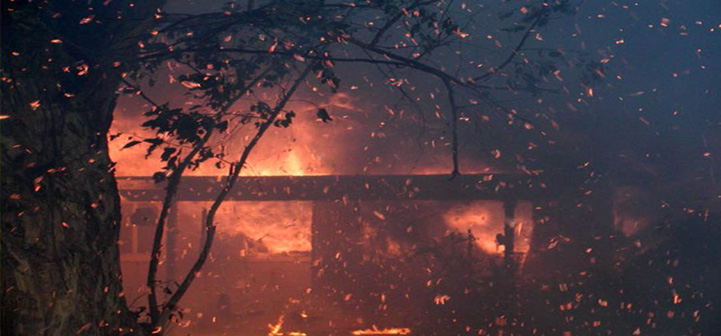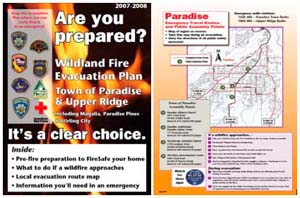It depends on the types of plants. Generally, irrigating helps plants stay green and moist and less likely to burn. In arid environments, irrigation is necessary to keep most plants alive. However, some plants become overgrown when watered and create too much fuel, becoming a maintenance headache. Some plants can be mowed or cut back at the beginning of the fire season and then irrigated very infrequently so they don’t grow during fire season. Some drought-tolerant plants stay low and …
Selecting Firewise Plants
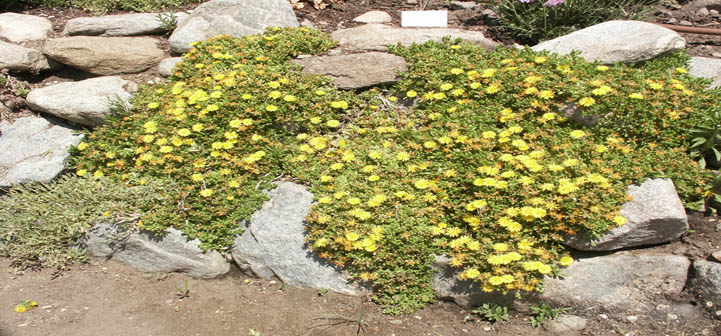
Firewise Plant Characteristics
Firewise plants have a number of characteristics in common, but also can vary considerably. Below are some important points about these plants and their management.
- No plant is fireproof. All will burn in a very intense fire.
- Firewise plants all have one or more of these firewise characteristics:
- Tissues contain more moisture, especially during the fire season.
- Tissues contain low amounts of volatile oils and other readily flammable chemicals.
- Plants provide less fuel, either by producing less
Ed Smith

Ed Smith is currently employed by the University of Nevada Cooperative Extension and serves as the natural resource management specialist for western Nevada. Since 1988, much of his time has been spent addressing the issue of Nevadans living in high fire hazard areas. Twenty years ago, he helped establish the Neighbors for Defensible Space organization and created the Incline Village Defensible Space Program at Lake Tahoe. Currently, he is the coordinator of the Living With Fire Program, an interagency wildfire …
Mike Kuhns
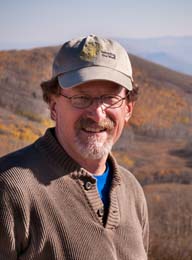
Mike Kuhns, Professor and Extension Forester in the Department of Wildland Resources at Utah State University, promotes fire safety in landscapes. As an Extension forestry expert first in Nebraska and then in Utah, his work moved toward urban forestry, so focusing on landscaping around buildings was a natural topic because he understood the vegetation. Early on he was on a committee that popularized the term ‘firewise’ and developed research and education materials to help people maintain firewise landscapes.
Parts of …
JoAnne Skelly
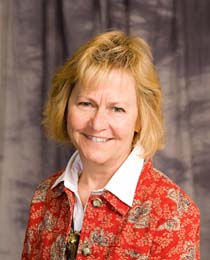
JoAnne Skelly is the Extension Educator with the University of Nevada Cooperative Extension (UNCE) for Carson City and Storey County. She joined UNCE in 1992 applying the organization’s mission of developing programs driven by community needs to improve the well being of people and their environment.
JoAnne’s areas of specialization include:
• Firescaping – Landscape Design for Defensible Space
• Integratede Pest Management
• Integrated Landscape Design
• Greenhouse Production for Non-Profits
• Volunteer Management
• Marketing for Non-Profits
• …
Janean Creighton

Janean Creighton is an Associate Professor and Extension Specialist for the Oregon State University & USFS Pacific NW Partnership Project. She is currently the Administrative Director for the Northwest Fire Science Consortium. Janean’s position focuses on increasing the information delivery and technology transfer capabilities of fuels and fire researchers to managers and practitioners in the field, and integrating USFS Pacific NW Research Station wildfire and fuels research results into existing and emerging extension curricula, publications, and educational programs. Janean received …
Yvonne Barkley

Yvonne Barkley is the Associate Extension Forester at the University of Idaho and has been in her current position since 1990. She earned a B.S degree in Environmental Studies from Southern Illinois University, Carbondale, IL and a M.S. in Forest Resources and a partially completed a PhD in Forest Resources at the University of Idaho. Past experience includes working as an arborist and tree care specialist, a grower/supervisor in several commercial nursery operations, and as a research associate in forestry, …
Community Evacuation Plans
If you are interested in finding out if your community has an evacuation plan contact the local fire department, law enforcement agency, or emergency services department. They will discuss planned evacuation routes, assembly points, how to get evacuation information and tips on evacuation in your community.
Do not wait until a wildfire occurs to attempt to obtain this information as fire and emergency services will be extremely busy. If your community does not have one, meet with your fire department …
Steve Quarles
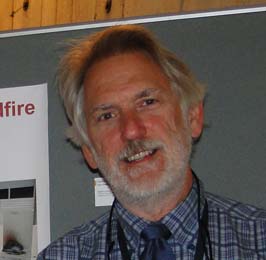
Stephen Quarles is an expert on how building materials perform and how different building designs fare in wildfires. For example, does the roof design make the structure more vulnerable to wildfires?
“I am interested in the durability of buildings exposed to fire and rain. When you can find ways to help a building survive several hazards, you can really argue the benefit of that feature. I like learning something new but it’s not fun when you learn from the suffering …
Glenn Nader

Glenn Nader has always lived in wildfire-prone areas. He’s a fourth generation California rancher who has been through three wildfires in Lassen County – that’s in northeastern California close to Reno, Nevada. “I do understand the homeowner’s point of view. I kept putting fire prevention tasks on my to-do list. By the third wildfire near my ranch, I felt comfortable that my home could survive the fire.”
Glenn is the University of California Cooperative Extension Livestock and Natural Resources Advisor …
